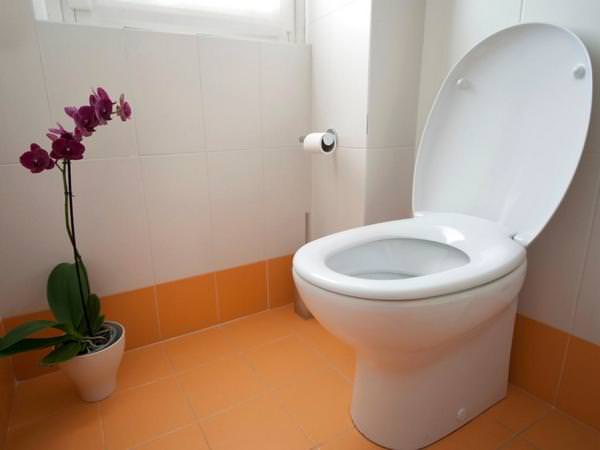Euonymus warty fruit. Details about the plum. Growing, beneficial properties and variety selection. Blooming euonymus: photo
Euonymus warty - Euonymus verrucosa Scop. - a shrub from the euonymus family (Celasfraceae) with a well-developed root system. Stems up to 2 m high. Sometimes this shrub for some reason becomes single-stemmed and takes the form of a tree up to 3 m high. The bark of young overhead shoots is green, later browning, densely planted with black-brown or reddish cork warts, hence the name of the plant. The bark of the trunks is almost black, wrinkled, with whitish cracks. Leaves are opposite, oblong-ovate, 1.5 to 6 cm long and 0.7-3 cm wide, pointed at the apex, thin, leathery, dark green above, light green below, sometimes pubescent along the veins on the lower side of the plate , along the margin finely serrate, with short petioles.
Flowers with an unpleasant odor, with a diameter of about 1 cm, are collected 3-9 in inflorescences, semi-umbrellas, located in the axils of the leaves. A cup of 4 sepals. Corolla of 4 almost rounded petals of greenish-brown or brownish color with purple or dark red spots and dots. 4 stamens with almost seated whitish anthers. Pestle with upper ovary.
The fruit is a 4-nested pink or reddish pear-shaped box, about 6 mm long and 8-1 2 mm in diameter, almost square in cross section, with rounded edges. When ripe, it cracks, and 1–2 seeds from each nest hang outwards on thin threads. Seeds are black, shiny, ovoid, 6-7 mm long, half surrounded by a fleshy, juicy brick-red seedling, the so-called roof. The result is an extremely entertaining education, similar to an earring.
Ripe fruits give euonymus vivid picturesque. The beauty of the plant during this period of its life is supplemented by leaves that acquire a yellow-pink color in autumn. The contrasting combination of black seed and brick-but-red roofing, apparently, is one of the devices for attracting birds, which are the main carriers of euonymus seeds.
The euonymus blooms in May - June, the fruits ripen in August - September. Flowering, as a rule, is plentiful, but not every flower sets the fruits. Good fruiting is repeated after 2-3 years. Fallen
seeds germinate after 1-1.5 years. The euonymus grows very slowly. At the time of fruiting, in vivo, it enters only at 8-1 1 years, in the culture, seedlings begin to bloom earlier - at 4 years. In addition to seed reproduction, vegetative is also expressed - by root offspring.
Spread of the warty euonymus
Warty euonymus is common in the forest and forest-steppe zone throughout Europe, as well as in the Caucasus and Asia Minor. In European Russia it reaches in the north to Pskov and Kostroma, in the east to Izhevsk.
It has good shade tolerance, which allows it to grow in the undergrowth of different types of broad-leaved, mixed and pine forests, where the stand is formed by oak, linden, hornbeam, maple, ash and other species that give a deep shadow. On a hectare of forest area, there can be from several tens of euonymus bushes to 8 thousand. Often in forest ravines and thickets of shrubs, including in river valleys.
Economic use of a warty spindle tree
IN euonymus roots contains 8-10 (up to 32)% of gutta-percha. In the first half of the 20th century, it was widely used as a raw material for the production of a wide variety of products, from machine tool and machine parts to children's toys, it was the best insulator in electrical engineering. Gutta-percha had some significance in medicine: it was used in dental fillings and in surgery.
In order to obtain gutta-percha, a wide harvesting of roots was carried out in our country until the middle of the 20th century. Later, the success of chemistry led to the possibility of producing a wide variety of relatively cheap plastics, and almost everything that was made from gutta-percha is now made from synthetic plastic. This put an end to the destruction of the euonymus.
The wood of the euonymus stems is very durable. When the roots were harvested, the wood was recycled. It was used to make shuttles for looms, knitting needles, hairpins, wooden nails, musical instruments, etc. The seeds contain up to 54% of fatty oil, which could be used for soap making if the collection of seeds was not so laborious and, hence extremely expensive.
Sashes of euonymus box fruits used to be used as yellow and brown dyes.
Powdered fruit was stained with household insects.
Medicinal value of the warty spindle tree and methods of therapeutic use
For medicinal purposes, use euonymus fruits as an emetic and laxative. Cardiac glycosides have recently been isolated from seeds.
The fruits of the warty euonymus are considered poisonous, which, however, does not interfere with their use in folk medicine. Medicines from the fruit are prescribed for malaria.
Fruits also stimulate sexual activity, but are very toxic and require special care.
Powder from dried fruits and leaves is also used as an anthelmintic. Using it for external use, people are trying to treat scabies and fight lice.
A decoction of leaves in the Caucasus is drunk with dropsy.
Infusion of euonymus branches is taken for edema, gonorrhea, chronic constipation. 1 tablespoon of chopped branches pour 0.5 l of boiling water, insist on a boiling water bath for 5 min., Cool for 30 min., Strain. Take 1-2 tablespoons 3 times a day after meals.
According to Sedir, the euonymus is ruled by the sun.
Euonymus warty refers to long-lived shrubs of deciduous type. It got its name because of the numerous tubercles covering all the old branches.
Young shoots are first smooth, green. Then they change color to brown and acquire their characteristic decoration in the form of warts.
Oval leaves with a sharp tip and openwork edge, painted in grass green in summer and bright red in autumn. According to the size of the leaf, 2 forms are distinguished - large-leaved, late and small-leaved, early.
In spring, all branches are decorated with small pretty flowers of delicate pink color, which are subsequently replaced by original fruits. It is thanks to them that euonymus easy to recognize even in the forest.
INTERESTING! Shiny black seeds are contained in bright scarlet boxes, only the tips protruding slightly.
Warty euonymus has a very specific "flavor" - It smells like field mice. This unpleasant odor repels the curious, which is very handy - the fruits of the bush are poisonous and can cause serious poisoning..
Kinds
The euonymus has several varieties:
- unique;
- - Ideal for growing at home;
- beautiful ;
A photo
For a more visual story, here are a few photos of a warty euonymus:



Care
Actions after the purchase
Immediately after acquiring euonymus preferably planted in a permanent place in the garden. It takes root very quickly, it is enough to water it in time, avoiding strong drying of the soil.
It is advisable to plant a room euonymus in a suitable pot with a nutrient substrate.
Landing
IMPORTANT! It is better to plant an euonymus in the spring, so that it has time not only to take root, but also to grow stronger.
The bush does not make any special claims to the composition of the soil, but grows poorly in an acidic environment. Ideal for it is a combination of 3 parts of soddy soil with sheet soil, fine-grained sand and humus (1 part of each component).
The drainage layer is vital - stagnation of water euonymus poorly tolerates both in open soil and at home.
Transfer
 In the first 5 years of life on the street, the bush can be replanted without fear of causing stress to the plant. The superficial root system is easily dug out.
In the first 5 years of life on the street, the bush can be replanted without fear of causing stress to the plant. The superficial root system is easily dug out.
More adult specimens should be disturbed only as a last resort. The procedure should be carried out by transshipment so as not to injure the roots.
Lighting and temperature
Undemanding and hardy bush will grow in the shade and in the bright sun. But shading in the noon period will be optimal with good lighting in the morning and in the evening.
Bush well tolerates extreme heat and any cooling. A stable decrease in temperature below 9-11 ° causes a discoloration of the leaves - they begin to turn red.
When growing a house, it is desirable to provide bright lighting. The euonymus can even be put on the south window, shading at noon.
Watering
On the street you need only in severely arid periods. how drought tolerant shrub, easily tolerates the absence of moisture. At the same time, excess water can cause rotting of the roots and death of the plant.
Watering at home is a must.. The procedure is carried out after the soil dries up at least a third of the volume. Water should not be hard, it is best to use a well-maintained.
IMPORTANT! In winter, it is necessary to reduce the amount of watering and constantly monitor so that the water does not stagnate either in the pot or in the sump.
Top dressing
 In the warm season, while the street spindle tree is actively growing, it is recommended to apply organic fertilizers in the spring and mineral fertilizers in the summer. Two top dressings for the entire season will be enough.
In the warm season, while the street spindle tree is actively growing, it is recommended to apply organic fertilizers in the spring and mineral fertilizers in the summer. Two top dressings for the entire season will be enough.
Growing
To grow a warty euonymus on the street is absolutely not burdensome. In addition to watering and feeding, care consists of periodic loosening of soilto improve the flow of oxygen to the roots.
Preparation for winter is carried out after all leaves of euonymus have fallen. In adult specimens cover the ground around with spruce branches, sawdust or dry topsso that the roots do not freeze during a period of severe cold. Young seedlings of the first three years of life are completely wrapped with covering material.
Indoor euonymus is grown in a wide container so that all roots are freely located inside. He also needs periodic loosening, constant pruning and crown formation.
Pruning
Withered and weak branches can be cut at any time. Thus, the plant is cleansed of debris.
IMPORTANT! At the beginning of spring, forming pruning is necessary to give the plant the desired shape. Euonymus can be made bush, standard or bonsai.
Breeding
Perhaps several ways at once:
- Seeds. They are pre-stratified to get rid of a dense peel, disinfected in a solution of potassium permanganate and seeded in a loose substrate. Depth of embedment - not less than 2-3 cm.
- Cuttings. Young branches of green color are used, which are placed in sand and peat for the formation of roots. Containers with seedlings should be in a mini-greenhouse or under the halves of the bottles.
- Separation of rhizome and bush. A very easy method used when transplanting a plant. A sharp tool separates part of the rhizome with shoots and sits separately.
- Layering. Available to any gardener, a method in which no costs are needed. A healthy shoot is bent to the ground and pinned so as not to straighten. Part of the branch is covered with soil and moistened to get the roots. The finished plant is cut off from the mother and transplanted to another place.
Benefit and harm
 In addition to toxic substances that cause severe poisoning in humans and animals, the warty spindle contains many useful elements.
In addition to toxic substances that cause severe poisoning in humans and animals, the warty spindle contains many useful elements.
Thanks to this, the plant has long and widely used in traditional medicine.
With the help of infusions, decoctions and tinctures of fruits and bark, problems such as headaches, digestive and nervous system disorders, inflammation of the bronchi and intestines.
Wood helps relieve pressure and strengthens blood vessels.
Diseases and Pests
If leaves turn pale and lose colormeans spindle tree suffering from excess light.
On the leaves yellowness appearsthen they fall off - excess moisture caused root rot.
Tip drying and wraparound occurs with prolonged dry air.
IMPORTANT! Despite the toxicity, euonymus is very fond of various pests. Ticks can attack the shrub - arachnoid and flat red, scale insects or false shields, aphids, mealybugs and numerous caterpillars.
Watch a short video about the appearance of a warty euonymus:
Conclusion
A warty spindle tree is an unpretentious and hardy plant that can be grown without problems both on the street and in the house.
If you find an error, please select a piece of text and press Ctrl + Enter.
Original plants decorating our personal plots are not only exotic "overseas guests". There are some among those growing from time immemorial in our native land, and they are not inferior in their decorative qualities. For example, a warty euonymus (Euonymus verrucosus).
This is one of the species of a huge genus of euonymus (Euonymus L.). Like all his relatives, he is famous for decorative foliage and exotic fruits, poisonous, has a number of medicinal properties and has practical applications.
 Warty euonymus in the wild grows in the forests of the middle latitudes of Eurasia. This is a deciduous shrub, its height is from one and a half to four meters. It grows very slowly, annual growth of about 10 cm. Young shoots are green and smooth without edges, and old ones are grayish-brown, covered with specific small black-brown growths-warts, which serve as a kind of “perfumes” in the coarsened bark, through which the process breath of branches. According to these growths, it can be distinguished from other species, which was reflected in its name.
Warty euonymus in the wild grows in the forests of the middle latitudes of Eurasia. This is a deciduous shrub, its height is from one and a half to four meters. It grows very slowly, annual growth of about 10 cm. Young shoots are green and smooth without edges, and old ones are grayish-brown, covered with specific small black-brown growths-warts, which serve as a kind of “perfumes” in the coarsened bark, through which the process breath of branches. According to these growths, it can be distinguished from other species, which was reflected in its name.
The leaves of the warty euonymus are light green, elliptical, pointed upward, along the edges with small denticles. The length of the leaf plate is up to 8 cm. By autumn, the leaves become bright, painted in orange-pink tones. Moreover, the euonymus does not drop foliage for a long time and remains elegant for a long time. 
Flowering occurs in late spring. Nondescript four-petal flowers (0.8 cm in diameter) on long peduncles are collected in a brush from three to nine pieces. The color of the flowers is very unusual, it is difficult to describe, it is greenish-brown with purple spots. Since the plant secretes viscous nectar and is pollinated by flies, nature "awarded" the flowers with an unpleasant "mouse" smell.
The decorative advantages of euonymus include its exotic fruits. At first, the fruit is a green slightly flattened pear-shaped box, consisting of four blades. But at the end of summer, the box ripens, becomes bright pink, opens, and from it glistening black seeds peek out, slightly covered with orange-red seedling. Such a box hangs very nicely on long thin stalks of pedicels. Unusual shape and bright colors attract the eye. No wonder the people call this plant “wolf earrings”. 
Landing Features
If you decide to plant a warty euonymus in your area, then you need to remember that this plant is a forest, and it needs the appropriate conditions.
Time for planting euonymus, as for many other plants, is early spring and mid-autumn.
 The ideal place for this species would be partial shade. In direct sunlight, a warty spindle tree can get burns.
The ideal place for this species would be partial shade. In direct sunlight, a warty spindle tree can get burns.
This shrub is unpretentious, but really does not like stagnation of water. Therefore, choosing a place, pay attention to the proximity of groundwater, as well as the possibility of accumulation of melt or rain water. In conditions of constant wetting, the plant will die. In this regard, be sure to equip a good drainage in the landing pit (about 15 cm). The size of the landing pit should be approximately two times larger than the volume of roots with an earthen lump.
Soil for euonymus is suitable neutral or slightly alkaline. Lime must be added to acidic soil. Another requirement for the soil is its good aeration. It must be loose in order to provide good access to the roots of the air. Suitable composition: garden soil, peat compost, sand, wood ash (or lime). Do not forget to add a little complex fertilizer.
We finish the landing traditionally - with abundant watering and mulching of the root circle.
We multiply the euonymus
The warty euonymus, like its other euonymus counterparts, is propagated by seeds, green cuttings, layering and division of the bush.
Breeding seed the most troublesome, as their stratification is necessary, and the spindle tree does not spoil with good germination. But if you decide to do this, then for 4 months the seeds must be kept at a temperature of no higher than three degrees in moist coarse sand in order for them to burst a hard seed coat. After they are cleaned and etched in a weak solution of manganese (0.5%). Planted in a mixture of sheet soil with humus and the addition of sand, cover with a film and maintain constant soil moisture. Rooting lasts about two months. Some experts suggest planting cracked seeds in the fall immediately into the open ground, during the winter they will undergo natural stratification.
Like any ornamental shrub, the spindle tree will help decorate the unsightly walls of buildings or fences, divide the site into zones.
Practical use
The warty spindle tree is not only a decorative bush used in landscaping. It is a poisonous but medicinal plant. In folk medicine, parts of this plant are used as a laxative and emetic, with weakened potency and helminthic invasion, as well as with nervous disorders and severe headaches. However, exceeding the dose can cause intestinal bleeding.
 Previously, when the chemical industry did not offer a large selection of plastics, the euonymus root bark was the raw material for gutta percha. From the cusps of the fruits you can get natural yellow and brown dyes. And use seeds in soap making.
Previously, when the chemical industry did not offer a large selection of plastics, the euonymus root bark was the raw material for gutta percha. From the cusps of the fruits you can get natural yellow and brown dyes. And use seeds in soap making.
The hard wood of euonymus has long served as material for various crafts.
And although many are repelled by some features of the euonymus, this wonderful shrub is worthy of decorating gardens and parks. Many, once having seen it in all the autumn fiery beauty and appreciating the mysterious unusualness of the “earrings” fruits, fall in love with this plant. Imagine: late autumn, trees already stand without leaves, in some places the first snow lies, the garden is sad and dull. But it’s worth planting an euonymus in the plot, as the gray landscape of autumn is dispersed by a bright crimson, as the last rays of the setting sun disperse the coming evening haze. And the chirping of wintering birds, attracted by the variegated fruits of euonymus, will add to your good mood.
Warty euonymus is an ornamental fruit bush that belongs to the euonymus family - Celastraceae. The scientific name of the plant - Eonymusverrucosus, will coincide with the Russian translation: the branches of the bush are covered with growths resembling warts. The synonymous name for the shrub Eonymuspannonicus is a drooping spindle tree, less common.
Note: in the scientific literature the name Eonymusverrucosa is found, that is, the feminine gender is used. This is the correct name in terms of the grammar of the Latin language, in which all the trees and shrubs are feminine. The masculine gender is adapted to the Russian-language word "euonymus".
Morphological features
The life form of the warty spindle tree is a deciduous shrub, sometimes a tree reaching a height of 2.0-2.5 m. In the form of a bush, the spindle tree usually does not exceed 2 m. The spindle tree is a typical representative of mesophytic plants growing in places where there is no excess moisture, but and not too dry.
The leaves are simple, with the opposite arrangement of leaves, may not fall for several years. Therefore, shrubs are considered half evergreen.
The root system of the seedlings is pivotal, like all plants from the class of Dicotyledonous plants, but after a couple of years the root system becomes fibrous, superficial, with many additional roots.
 A characteristic species feature is small growths on lignified branches. Young shoots of green color are smooth, and adults are covered with dark brown tubercles, “lentils”. Thanks to these growths, oxygen enters the internal tissues of plants.
A characteristic species feature is small growths on lignified branches. Young shoots of green color are smooth, and adults are covered with dark brown tubercles, “lentils”. Thanks to these growths, oxygen enters the internal tissues of plants.

The euonymus flowers are small, inconspicuous, four-membered, collected in panicle inflorescences. Pollinated by insects (entomophilia). But since the main pollinators are flies, the flowers of the warty euonymus have an unpleasant odor similar to that of mice.
The fruit is a box with seeds and bright orange seedling. The casement of the box is coral or pink, which gives an additional decorative effect to the euonymus. Fruits and seeds are a morphological characteristic of the warty spindle tree.
Note: the warty euonymus is a very poisonous plant, its fruits cannot be eaten, and after contact with the bush it is imperative to wash your hands. Bright fruits can attract young children who can eat them. Therefore, the euonymus should not be planted in places where there are children (kindergartens, school grounds, playgrounds).
Habitat and place in ecosystems
Natural places of growth are broad-leaved or, less commonly, mixed forests of Eurasia. It can grow in the foothills or mountains. It plays the role of a shrub layer in forest ecosystems, growing both in glades and edges, and under the forest canopy.
Growing conditions
Warty spindle tree, belong to not fancy shrubs, the cultivation of which is possible for any gardener. The shrub is frost-resistant, withstands dry periods, is not too susceptible to diseases and pests.
Lighting
The shrub grows in partial shade, or in bright diffused sun. Withstands several hours of direct sunlight per day. But it is better that it be the morning or evening sun. The euonymus feels good in the darkened areas of the garden, where sunlight hardly penetrates.
Substrate
Warty euonymus differs from most ornamental shrubs in that it prefers to grow on substrates whose acidity exceeds 7, i.e. alkaline.
Note: The optimum acidity is pH 7.1 - 7.9.
Shrub loves fertile soils, enriched with organic components, with good aeration. With stagnation of water in the ground and poor drainage, the euonymus roots rot.
If the substrate at the site of the proposed landing of the spindle tree is acidic, then lime is added to it, and then compost. To improve aeration (air penetration), sand and humus are added to clay or loamy soil.
Watering
Beresklet prefers moderate watering. On soils with a higher density, less shrub should be watered. In the summer, during a period of long drought, the spindle tree can be additionally watered under the root. In the autumn period, even in the absence of precipitation, the euonymus is not watered.
Propagation of a warty spindle tree
The shrub is propagated using seeds (generatively), which germinate better if sown in the fall. For germination, seeds need stratification (exposure to cold). To do this, you can hold the seeds in the refrigerator for about 3 months, at a temperature of 2-4 degrees (the seeds are covered with sand or perlite).
Vegetatively, warty euonymus is propagated by dividing shrubs, layering or cuttings. At the same time, both green and woody shoots can be used for cuttings. Cuttings are prepared after flowering, in early or mid-summer. The rooting period is from 40 to 50 days, planting in the ground - in the fall.
The use of euonymus in landscape design
The shrub is especially decorative in the fall: in addition to the exquisite fruits, the leaves of the euonymus acquire a bright red or orange-red color.
- Compositions with other shrubs (coniferous and deciduous);
- Hedges;
- Solo planting in partial shade or shadow;
- Group plantings, consisting solely of a warty euonymus.
Beresklet belongs to the most beautiful woody plants in Europe and Asia. The article discusses how to land and proper care. The presented photos allow you to get acquainted with the decorative varieties of this shrub. The described methods of reproducing euonymus will help everyone to stock up on the necessary amount of planting material to create a hedge or to colorfully decorate the territory of the infield. Fertilizing will ensure good growth of seedlings, bright colors of its leaves and fruits.
Varieties and varieties of euonymus
The genus Beresklet is a member of the Bereskletov family. Some species of euonymus are shrubs, others are trees. They can be evergreen and deciduous. The most attractive feature of the plant, which is shown in the photo, is the variety of autumn colors of leaves, simultaneously combining red, yellow, white, orange, purple, burgundy shades.

Euonymus in the fall
Bright fruits due to the presence of toxic substances can not be eaten, but their unusual shape (pink lanterns with hanging earrings) is a wonderful decoration of the garden in late autumn. During frosts and snowy blizzards, birds wintering in our latitudes enjoy the fruits. Euonymus is also valued as a medicinal plant, and planting it next to the apple trees allows you to fight one of the most dangerous pests of these fruit trees - the apple codling moth.

Flowering warty spindle tree
The most common grades of euonymus include the following:
- Fortune euonymus - a low evergreen shrub brought from China by the English scientist R. Fortune. The height of this evergreen frost-resistant shrub does not exceed 50 cm. It has dark green leaves with a white or yellow border at the edges, as can be seen in the photo. The fruits of the plant are less bright in comparison with tall species, but quite spectacular. In the climate of the middle zone, this variety rarely blooms and bears fruit;

Fortune euonymus
- Euonymus warty - deciduous shrub, distributed in the mountainous regions of Russia, Ukraine, the center and southeast of Europe. Differs in unpretentiousness, frost resistance, high decorative qualities. The bushes reach a height of 1.5 m, the branches have thickenings (warts), are characterized by slow growth, annually adding only 10-12 cm;

Euonymus warty
- European euonymus - Often found in deciduous forests of the central and southern regions of Russia, grows in Western Europe, Asia Minor, and on the Balkan Peninsula. Another name for this species is Bruslin euonymus, in America - spindle-shaped tree. The plant reaches a height of 2 to 8 m, can withstand up to 15 degrees of frost;

European euonymus
- Japanese euonymus - a heat-loving variety from Japan that can not withstand lowering temperatures below 5 degrees. Can be grown in an apartment or a heated conservatory. The plant may have shiny green or variegated leaves, at home its height does not exceed 0.5 m. Some natural species of Japanese euonymus grow in the form of a vine 5-7 m long;

Japanese euonymus
- Dwarfish euonymus - a rare shade-tolerant species, reaching 1 m in height and preferring carbonate soils. The shrub is very decorative due to fine-toothed leathery leaves and yellow-green fruits. With a tight fit in a row and a regular haircut, it is well suited to create a beautiful border. When vaccinated on a spindle tree, a Japanese one can obtain specimens with a weeping crown shape;

Dwarfish euonymus
- Euonymus winged compactus - shade-tolerant deciduous plant 1-2 m tall, imported from the Far East. The branches have a rounded shape with faces formed by longitudinal growths, dark red fruits have the shape of boxes, with the advent of autumn the leaves become bright red in color, giving a special elegant look to plants.

Euonymus winged compactus
Planting seedlings
When choosing a place for planting seedlings, it must be borne in mind that the plant does not like stagnation of water and does not grow well on acid soils. For highly growing varieties, a spacious place is needed away from plantings and buildings. Planting dwarf species in bulk boxes or containers that allow water to pass through will allow them to be brought into a bright, cool room or conservatory with the onset of cooling, while maintaining the temperature within 5-10 ° C. For planting euonymus, early spring or mid-autumn is suitable.

Euonymus seedling
Work sequence:
- A pit is excavated, the width and depth of which should be twice the size of the root system of the bush.
- At the bottom of the pit create a drainage consisting of sand, expanded clay or broken brick, then humus or ripened compost is poured.
- The earth and the nutrient layer are moistened, then the seedling is put to the bottom, it is filled with soil with compaction of the upper layer.
- The surface of the earth is watered.
Tip. So that moisture from the soil evaporates more slowly, the surface should be mulched with peat, and crushed tree bark can also be used instead. From time to time, the mulch layer can be renewed by adding peat. Due to this, the soil crust will not form, contributing to increased evaporation of moisture, and the ingress and germination of weed seeds will become more difficult.
Plant care
Euonymus, like most shrubs, requires regular pruning. In the spring, dried, damaged branches are cut, the crown of the plant is formed, in the summer a haircut will allow you to align the border from the bushes, to give it the correct geometric shape. This shrub does not require frequent watering, so in dry weather it can be watered rarely and moderately.

Pruning allows you to give the bush the desired shape
For good growth, the soil around the plant is loosened several times during the season, the application of fertilizers will also improve its development, providing a sufficient supply of nutrients to the roots. At a young age, the bush needs to be sheltered for the winter to protect it from low temperatures, adult specimens are not afraid of frost.
Tip. The juice of the plant is poisonous, therefore, when pruning it or other types of work that require contact with the plant, you need to protect your hands with durable gloves made of dense fabric.
Fertilizing and fertilizing euonymus
In order for the plant to please you with a healthy look, beautiful leaves and abundant fruiting, it is fertilized twice a year. In spring, during the formation of flower buds, manure diluted with water (1:10) is a good top dressing; it can be replaced with bird droppings, halving the concentration of the infusion.

Fertilize twice per season
During the flowering period, you can make complex-type mineral fertilizers containing trace elements. You can increase the size of ripening fruits by adding a small amount of phosphate and potassium fertilizers during summer watering. If the soil is clay, it is recommended that in the autumn, before digging up the tree-trunk circles, make some sand and slaked lime.
Bush propagation
With seed propagation, the fruits must be collected at the beginning of cracking. After peeling and processing in a solution of potassium permanganate the seeds planted in the ground, the seal should be shallow (up to 2 cm). During spring planting, they are preliminarily subjected to stratification - holding in a cool place (10-12 ° C) for 3 or 4 months. followed by placement in the refrigerator compartment with a temperature of 0 to 3 ° C for several months.

Euonymus seeds
Small plants of dwarf varieties are conveniently propagated dividing the bush. In this case, new shoots with a small part of the root are separated. Cutting the branches into two-thirds of their length, you can plant the root offspring in the prepared place. Such a plant easily takes root and soon forms a strong bush, growing in width.

Green stalk of spindle tree
Euonymus can be propagated and cuttings. But they should be harvested from a plant no older than 5 years. Cutting is started in the last days of June or in the first ten days of July. Each stalk should have one internode and a length of about 7 cm. Planting is done in a greenhouse with fertile soil, cuttings are covered with sand a few centimeters. Rooting time is usually 1.5 months. After which they can be transplanted to an open bed.
Eucalyptus pests and their diseases
The spindle tree can be affected by spider mites and aphids, this is accompanied by the appearance of silver patches on the leaves, deformation and loss of part of the leaf cover. To prevent the disease, treatment in the spring with a solution of colloidal sulfur will allow, in the summer - spraying with a soap solution, the Aktara insecticidal agent or its analogue.
Also, the plant can inhibit the mealybug and caterpillars of the codling moth, which, according to gardeners, prefer to eat leaves of euonymus rather than growing near fruit trees. To control pests, you can use decoctions of herbs and special chemicals that are produced by the industry in a large assortment.

Leaves affected by an euonymus scale
Having devoted quite a bit of time and effort to growing euonymus, you can decorate the site with individual specimens of this shrub or create a hedge out of it that pleases you with its attractive appearance almost all year round. This plant will protect the apple trees from damage by pests, increasing their yield.
Euonymus in the garden: video
Blooming euonymus: photo































